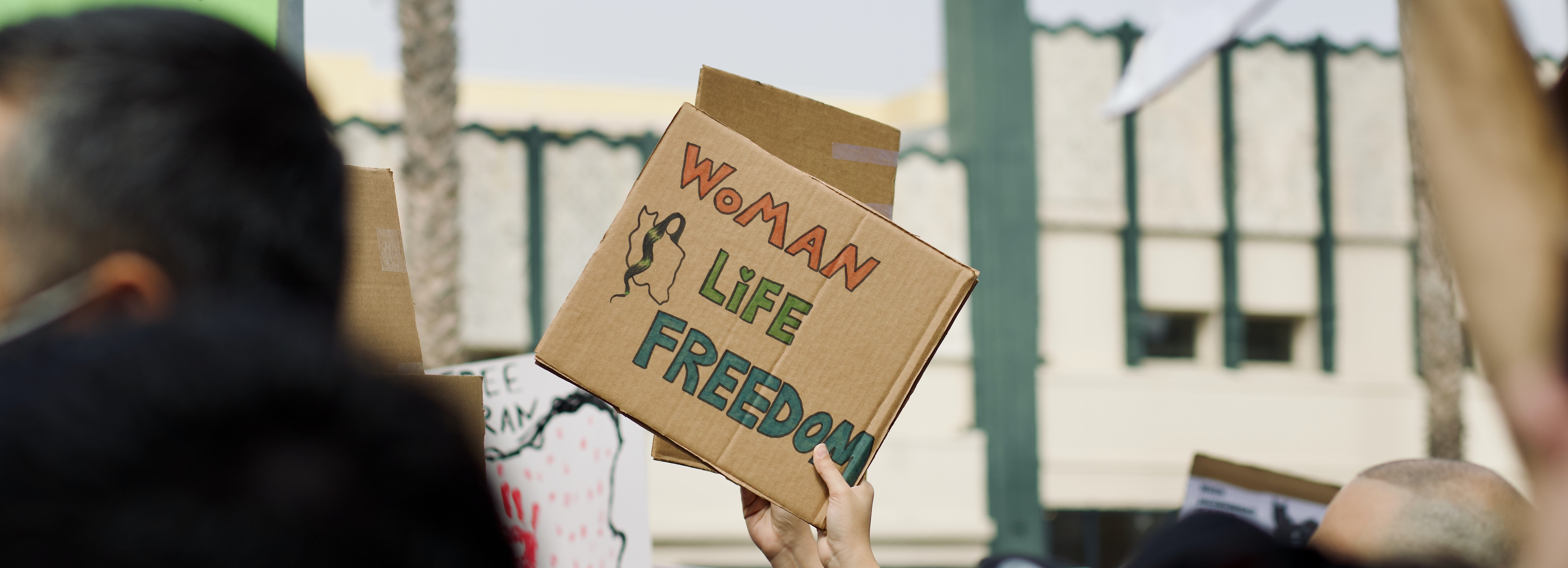They are fed up: The power of Iran’s women on the street

Photo by Craig Melville on Unsplash
Ingrid Vik Bakken
17.11.2022
In Iran, grievance and frustration has built up over time with the political regime, the notorious morality police, and the economic situation. But the recent provocation that sparked a wave of still ongoing protests in Iran was the news that a young woman had died in the custody of the morality police. In protest, women now burn their hijabs and cut their hair in protest. Women undoubtedly play the main role in the Iranian uprising, but how unique is this, and what does it mean?
Women in Iran have a long history of protesting. They were central during the revolution in 1979 and have on several occasions participated in protests against the clerical regime. In today's Iran, it is apparently the youngest generation of women who lead the riskiest demonstrations, but in the background they probably have the support and logistical help of a wide range of women. This is not unique to Iran; research shows that women are often good at building networks across social, geographical and ethnic groups. This was seen, for example, in Sudan in 2019, when the mobilization of women from all social backgrounds was important.
It is noteworthy that women in Iran actively use tactics that break with the established gender norms, for example by setting the hijab on fire and cutting off their hair. These are very effective actions because they break with what we expect women to do, and they go against the feminine norms. Using one's own femininity, breaking norms to shock or appeal, is also something we have seen in other contexts, for example in Liberia, when women activists undressed to force the warring parties to a peace settlement. Precisely because of stereotypical norms that women should be calm, peaceful, orderly, and not least, dressed, women have a unique repertoire of creative tactics that men do not necessarily have the same access to.
It was the murder of a young and innocent woman, Mahsa Amini, that made Iranians see red. After being stopped on the street due to apparently incorrect use of the hijab, the young woman was taken into custody. Not long after, she was sent to hospital with life-threatening injuries, which caused her death. Would the killing of a man spark as much resentment? It could be that there was an extra big "backlash" because it was a young woman who was the victim. Such an incident has virtually no legitimacy and arouses disgust, anger and condemnation among men as well as women. Regimes such as Iran use large resources to frighten their population into loyalty through threats, violence and intimidation. But this type of suppression can be counterproductive. We see that this murder, and consequent violence, beating and killings, have shaken men just as much as women, who are mobilizing and joining the demand for revolution.
Iranian women and men demand justice and call out the name of Mahsa Amini and other girls who have since been killed. They have two central demands: that women get equal rights and that the regime must go down. That precisely women's rights have such a large place among the demonstrators is something unique. In other uprisings, for example the so-called Arab Spring, women's activists had to fight hard for women's rights to also be prioritized. We have seen several times that a conservative regime can be overthrown by an even more conservative opposition. It is therefore positive for the women that precisely their rights are a symbol of the change that many Iranians want. If the protests persist and a multitude of organizations join in, it will perhaps mean that more men take over the leadership. It is then important that women's voices are not drowned, and that they ensure that any political change means that women's demands are still central.
No one knows how the protests will end this time. But the protesters clearly see the enormous mobilization potential that women have. Women make up half the population, but some regimes seem to still believe that they can treat women as they wish. Perhaps this is based on an assumption that women do not respond to oppression with protests and rebellion? These protests, on the other hand, show that women have the resources, courage and ability to build a movement that can even topple a regime like Iran. Should this wave of protests be suppressed, it will not mean that the rage and dissatisfaction will disappear. We should all support the demands of the brave activists who risk their lives for a better future.
Authors

Dr. Ingrid Vik Bakken
Room: LS 033
Phone: +49 (0)203-379-3676
E-Mail: ingrid.bakken[at]uni-due.de
Staff Portfolio

